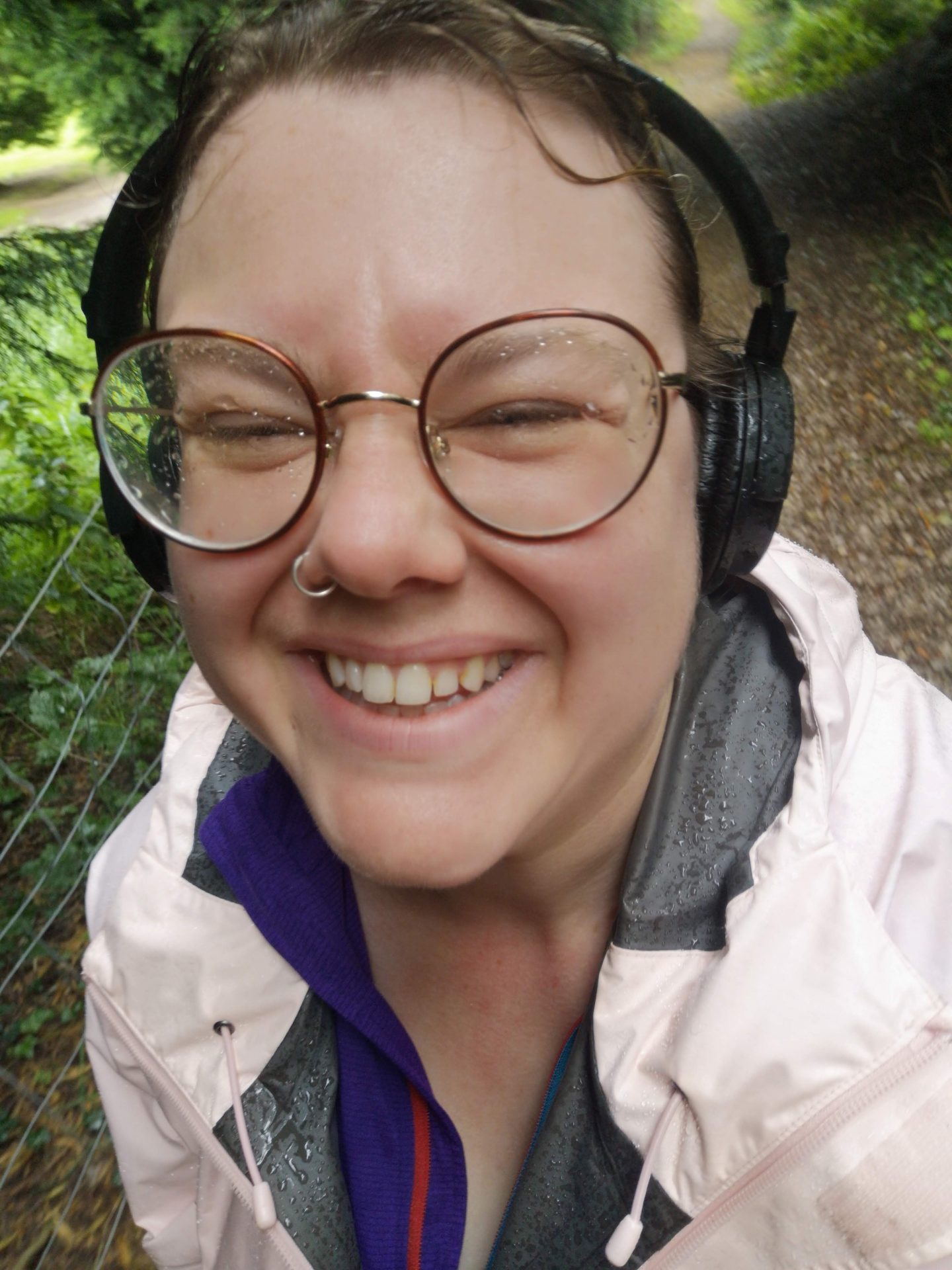Writer Emma Flint’s fitness journey has been plagued by fear. First was the fear that they just didn’t “fit“ into fitness spaces; the second was that exercising might give the impression that they “hated“ their body. Here’s how falling in love with running helped them to finally accept themselves. Emma’s pronouns are she/they.
Like so many runners, I only fell in love with running after conquering my fear of what other people might think when seeing me run. That might sound ridiculous, but my fears were really two-fold: First, I worried that my body didn’t “belong” in a fitness community, and second was the presumption that exercising would give other people the impression that I hated – and needed to change – my body.
As a plus-sized, non-binary person, however, people have assumed that my identity automatically means that I dislike my body. Existing outside the accepted norms of beauty, size and gender, it feels as though people like me are only able to enjoy mainstream past times like running if we’re on a quest to make ourselves more “normal”.
You may also like
Body neutrality: “Taking a break from Team GB finally taught me look at my body differently”
Everything about that belief is wrong. It promotes the idea that fatness and queerness need fixing – the fix being exercise. What if we don’t want to shrink ourselves down or fit in? I’ve made the conscious decision not to fit in, but rather, find a way of moving my body that makes me feel genuinely good.
Without an aesthetic or physical goal, I’ve been able to concentrate on the mental health benefits that come from movement. My own mental illness has been exacerbated by the incessant questions about my identity, and exercise has become one of the ways in which I’m able to escape that intrusive inquisition. To me, exercising as a larger, gender-fluid individual is a form of activism.
“So many people ask you if you’ve tried exercise for poor mental health,” says Ben Pechey, a trans influencer and activist. “I know that kind of advice isn’t necessarily the most useful because it’s a one-size-fits-all suggestion, but how can you say you’ve tried everything when you haven’t tried anything?” For Ben, their preferred form of exercise is spinning – something far removed from my own training regime. Nonetheless, their point about trying new things to help with poor mental health is how my own fitness journey began and it’s been proved right in my own experience.
These days, I find joy in running and calisthenics; they work together to move my body in unusual ways. I can feel the improvement after each session, especially since introducing calisthenics into my routine; my thighs feel stronger, my flexibility has improved, and I generally feel more capable. The satisfying post-workout ache reminds me that my body is worthy of praise, that it’s capable of so much more than I give it credit for. It’s no wonder that my mental well-being has improved as a result.

The joy of developing strength is something that unites both cis-gendered women and non-binary individuals. It’s as much a mental win as a physical achievement because getting stronger has allowed me to feel more secure and positive about a body that has been othered and excluded by society.
“There’s a narrative that exists, both within and around our community, that our current state is somehow temporary, that it’s something we’re working to fix, change, improve and develop,” Ben adds. “Especially for trans and non-binary bodies, however, the fact that the way we are is unique and different is kind of our raison d’être.”
Hating my body in an attempt to change it has been a huge part of my existence. The combination of diet culture and gendered notions made me believe that being thin was the only way to be happy. Even within the LGBTQIA+ community, the issue of thinness and its perception as being “better” is an issue, with thin, androgynous pop culture icons becoming the accepted face of queer. That beauty standard within my own community has made me question and doubt why I work out. It wasn’t until I fell in love with running that I was able to put a stop to those mind games.

Emry, another inspirational non-binary voice, perfectly explains this awkward space that non-binary and trans bodies exist in. “The perceived norm of skinny, white, AFAB (assigned female at birth), non-binary people is so damaging… The cis-passing expectations of binary trans people are also incredibly restrictive. No one should get to dictate your gender based on how you look.”
While I might be femme presenting, I’m not necessarily a woman and because of that, I want to work out in a gender-less space. My relationship with exercise isn’t the one you often read about, nor is my body usually the one that gets championed. Mine is wholly separate from the cis-female experience – we may have similarities in how we work out, but our relationship to our bodies is different, and that matters to me.
As Ben so rightly said earlier, our experiences aren’t one size fits all. If people take anything away from my experience as a plus-size non-binary person, I want it to be that we can accept our bodies for what they are, without shame. None of us should have to explain why we’re working out – whatever our gender. All we need is a passion to move.
Love running like Emma? Want to get stronger to make your runs feel easier? Join our Strength Training for Runners four week plan to run faster, longer and stronger.
Images: Getty/Emma Flint
Source: Read Full Article
